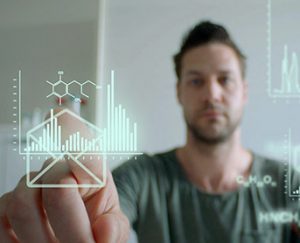Nelson Labs Europe, a leading lab in providing extractables and leachables services for the pharmaceutical industry, has developed the Proprietary Compound Screener Database to assist in unique identifications of over 3000 extractables in “first pass” extractable studies.
Why develop a Unique Compound Screener Database?
Historically, identification of compounds was mainly based on identification via commercially available MS-databases (NIST, WILEY)
- The mass spectrum of extractables is not always present in this DB; they are not optimized for polymer impurities.
- Good MS-fit does not always guarantee correct identification.
- In some cases, the list of “X best-ranked hits” needs to be given: which of the X is the correct one, which/how many hits per compound will be assessed?
- Manual interpretation: labor intensive, time consuming: every single peak needs to be assessed separately.
- MS-interpretation can depend on operator/study director/lab.
- The necessity of second pass spiking experiments to confirm identity via retention time confirmation.
Benefits of using the Nelson Labs Compound Screener Database
At Nelson Labs, we have found that having an extensive compound screen database as a resource creates several testing advantages, including:
- Double confirmation (RT & MS (via 4 qualifier ions)): No discussion about the identity, for “common compounds” as well as for more “exotic” compounds.
- Easier to make an interpretation of the mass spectra ⁄ chromatograms and to provide high-quality identifications in “first pass” testing, using standard analytical equipment.
- Easier to automate the identification process in the lab.
- The identification is independent of person (operator/study director) or lab.
- Easier to streamline interlab identification results.
- No spiking experiments necessary to confirm identity.
Current status of the Unique Compound Screener Database
- Headspace GC/MS Screener DB: > 700 Compounds
- GC/MS Screener DB: > 1700 Compounds
- UPLC\HRAM Screener DB: > 750 Compounds (High-Resolution Accurate Mass; Exacitive Orbitrap Platform)
These include: solvent residues, polymer residues (e.g. monomers), glue/adhesive residues, polymer oligomers and degradation compounds, polymer additives and their degradation compounds, impurities in polymer additives, filter residues, plasticizers, tubing residues, commercially available compounds of extractables, detected in different materials: (PE (LD, HD) grades, PP grades, rubbers (chlorobutyl, bromobutyl, EPDM, isoprene, …), PVC, multi-layer films, COC, COP, PBT, polyacetal (POM), ABS, silicone, C-Flex, polycarbonate,… project related synthesized compounds, isolated degradation products.
Future developments of the Nelson Labs Unique Compound Screener Database
Although the Proprietary Compound Screener Database allows identifying over 3000 compounds in a unique way, there are still a lot of extractables where the identification is problematic in “first pass” testing. Therefore, Nelson Labs Europe expanded its research program in 2009 using GC-ToF, UPLC-Orbitrap to further develop the Proprietary Compound Screener Database.



